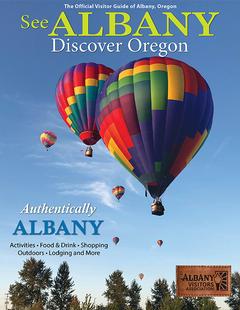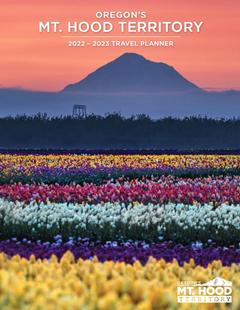Below you will find helpful information about Columbia River Gorge.
Overview
The Columbia River Gorge is undoubtedly one of Portlanders' favorite playgrounds. Beginning just at Portland's doorstep, the Gorge offers miles of unparalleled scenery and outdoor recreation options.
Visitors primarily traverse the Gorge on the Oregon side of the Columbia via either Interstate 84, the major route, built in the 1950s and '60s, or the adjacent Historic Columbia River Highway. An even smaller highway runs along the river on the Washington side, but there are fewer towns and amenities there, and few bridges connect Oregon to Washington in the Gorge.
From the gateway town of Troutdale (about 10 miles east of Portland), the western end of the Gorge is rich, dense woodland, green and fern-filled, while toward the east (once over the Cascades, beginning around Hood River), the landscape transitions into rolling, golden grasslands and sage-covered semiarid deserts.
Western Gorge
The western Gorge features numerous remarkable waterfalls, most notably Multnomah Falls: At 620 feet, it is Oregon's highest waterfall and the second-highest continuously running falls in the country. Hiking trails and picnic facilities are available at several Gorge waterfalls, and exceptional trails such as Eagle Creek wend their way deeper into the moist, fern- and trillium-bedecked temperate rainforest. Manmade features include the Vista House at Crown Point. Built in 1916 as a monument to Oregon's early pioneers and a respite for travelers, Vista House, now on the National Register of Historic Places, gives visitors a panoramic view of the Gorge.
Columbia River Highway
And of course, you can't forget the broad, powerful river (at some 2,000 miles long, the second-longest river in the United States) that gives the Gorge its name. Visitors partake of a wide variety of water-based recreation in the Columbia River Gorge, but reliable westerly winds in the Gorge have helped make it known to many as the windsurfing capital of the world.The eastern Gorge town of Hood River, long renowned for its produce -- particularly apples and pears -- has become something of a mecca for the sport. Just downriver, The Dalles' Riverfront Park is gaining renown as the best place in the Gorge to learn windsurfing: The park's contours soften the power of the river winds and protect beginners from the river's strong currents. Experts say fall windsurfing is the best, and most highly recommend sites in the east end of the Gorge, particularly around Three Mile Canyon.
Columbia River Highway
The Historic Columbia River Highway, the first federally designated scenic highway in the U.S, is a popular way to experience the Gorge. The charming historic route, which runs adjacent to Interstate 84, ran from Troutdale to The Dalles when completed in 1922. It is now unevenly restored, with its most popular section the western stretch from Troutdale to near Ainsworth State Park. The highway, much of which can be biked or driven, traverses many of the Gorge's waterfalls, as well as quaint historic bridges and, toward the east, some of the area's famed orchard country.
















